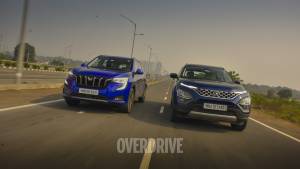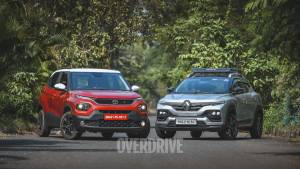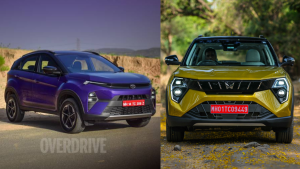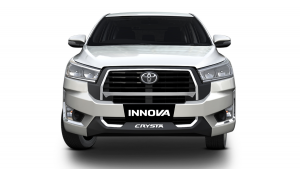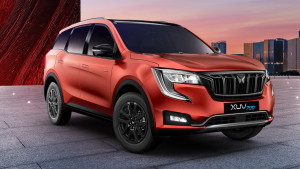Comparison test: Maruti Suzuki S-Presso AMT vs Renault Kwid Climber AMT
The small car has the toughest job of all, indeed. Think about it. Its buyers are among the most demanding, with wants/needs ranging from efficiency, comfort, space and being easy-to-drive, to being easy on the eyes and wallet. Phew. And then, the small car had a new threat, and it was in the shape of an SUV. It's only natural then that the small car evolved to look like one, and the Renault Kwid used that to its advantage at its launch in late 2015, proving to be the only real competition to Maruti Suzuki's dominance in the segment. Four years later, the Kwid has seen a refresh that gives it an even closer SUV-like face, while Maruti Suzuki comes back swinging with the quirky S-Presso. And just like that, we're back to square one which of these is the better car, ahem, mini-SUV?
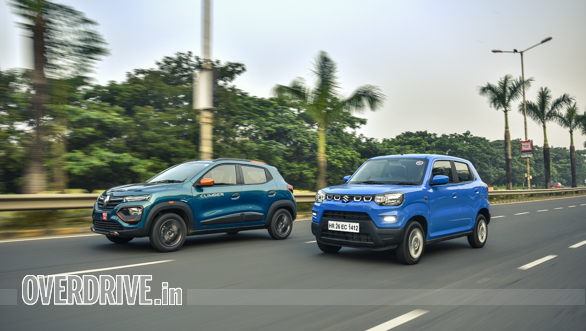
Styling
Of course, there's the possibility that one of you'll out there find the S-Presso terrific looking, with its Brezza-inspired grille. Perhaps in the way that the tiny Kei cars in Japan, resolute in sticking to their purpose of practicality, are actually cool. The S-Presso comes close but ultimately its tall and narrow proportions can't quite carry the look off, let down by the 14-inch wheels that simply don't fill out the wheel wells.
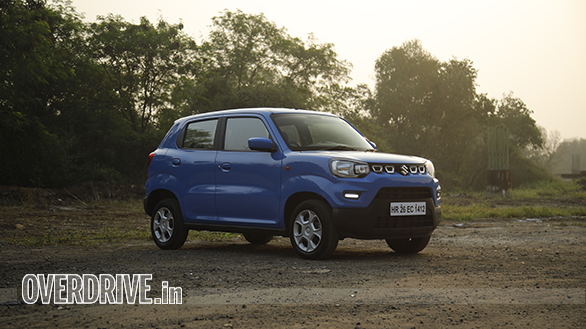
Accessories are a dime a dozen, including wheel arch cladding, and skid plates that give it some rugged appeal but don't end up going too far. Speaking of accessories, the LED DRLs on our test car are a tack-on, and seem a bit much for the Rs 10,000 asking price for a set they can only be used when the parking lights are off.
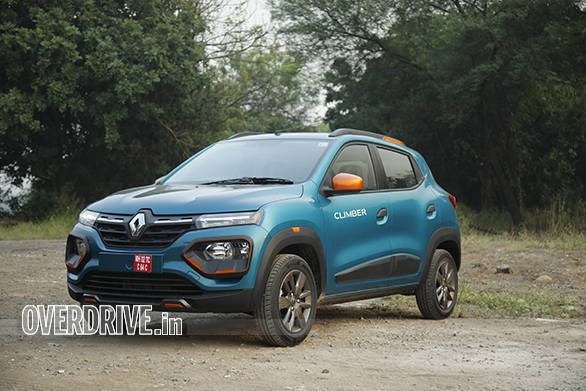
To mostly everyone else, the refreshed Kwid will look far, far more desirable. Its new face with its two-tier headlight treatment and horizontal grille is substantive looking. The LED DRLs look like a part of the design here, and bonus points for the contrast colours on this Climber edition being tastefully executed. Sure, in profile and from the rear, it still looks as hatchback-like as before but it's a more pleasing set of proportions. The 14-inch wheels deserve mention, for looking like alloy wheels while being steel wheels with clever wheel covers. The Kwid walks away with this for being better proportioned, and having better executed details.
Interiors
You can almost forgive the S-Presso for the way it looks when you realise how much space the upright windshield, and square roof liberates. You sit pretty high up, which is quite SUV-like, with a blank space staring back at you where the instrumentation would be. Just as well, given how basic the instrumentation itself is, with just a large speedo and a small MID panel.
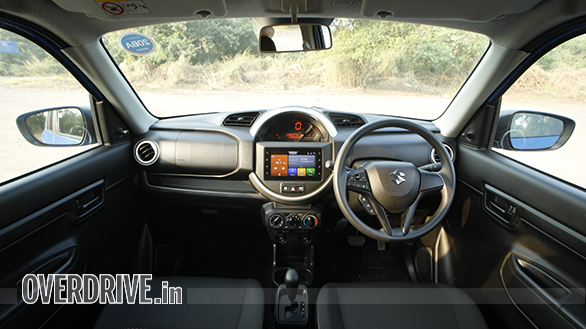
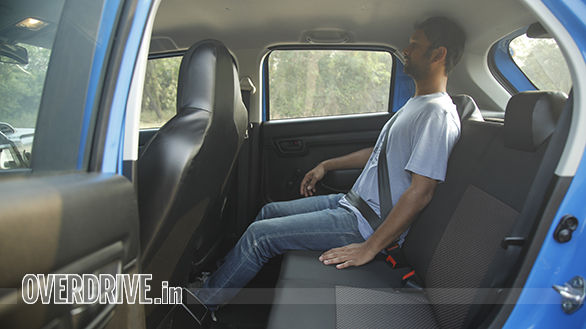
But what the high-set seating means is that rear passengers have loads of legroom, and stretching out is a genuine option if one wanted. However, sitting high up also means that your view out of the small windows is limited, with the high window line not helping. The quality of some of the plastics feels a notch above that of the Kwid's but it's a very slim difference, and none of us down at the office could reach a unanimous decision here.
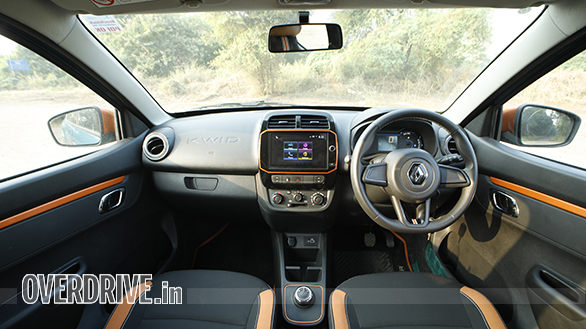
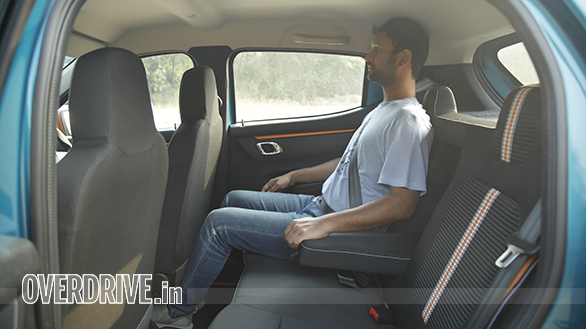
Getting into the Kwid, there's more colour in the cabin of this Climber model, and more usable storage spaces up front, including a massive glovebox. The instrumentation, with its negative LCD panel and rev counter one ups the S-Presso's, though as we'll see later, the tachometer may not be as useful as one would think. The smaller diameter steering wheel also has a thicker rim, and a nice leather panel on it, which feels less utilitarian than the S-Presso's thin-rimmed piece, but the Kwid misses out on steering controls for Bluetooth telephony and audio. Larger windows lead to a somewhat airy feel, which is needed since space is definitely more at a premium than on the S-Presso. The rotary gear selector dial will probably make things easier for new drivers, as will the reverse camera, another area where the S-Presso drops the ball. We noticed that the seats on the Kwid are firmer than the S-Presso's, and while both have fixed head restraints all around, the Kwid's are placed at a height where they're actually useful. The Kwid has the larger boot, at 279 litres of cargo space versus the S-Presso's 240 litres, but the latter's is a touch deeper in height.
Safety features
The S-Presso could have an advantage here, with two airbags as standard across the range, while the Kwid offers one as standard, with only the Climber (O) getting a second. But considering the variant we have on test has two airbags, as well as a reverse camera for the price, we're calling them even in safety features. Both haven't been crash tested so we can't speak to its crash worthiness yet, but a Kwid with one airbag has scored one star in a Global NCAP test. A poor showing, and a clear argument for Renault to add the second airbag too.
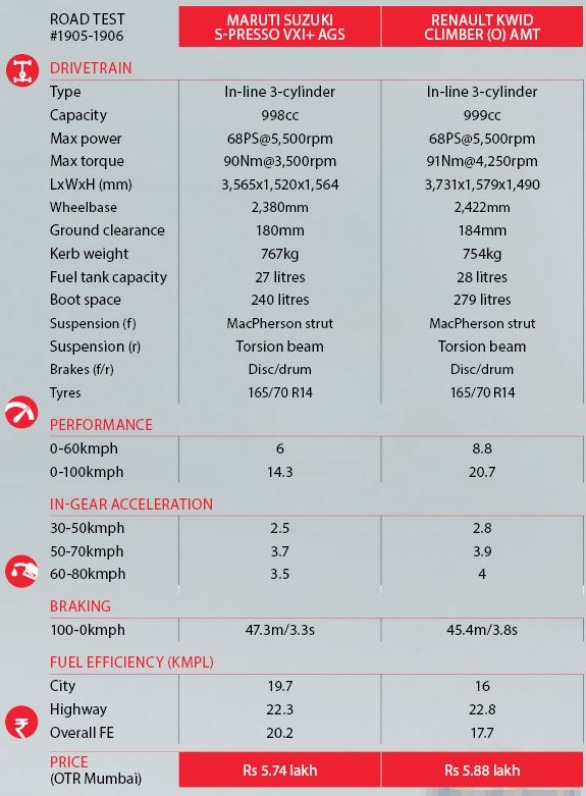
Engine, performance and efficiency
As similar as these two are on paper, with 1-litre, 3-cylinder engines with 68PS and around 90Nm of torque, mated to 5-speed automated manual transmissions, they couldn't be any more different to drive. The S-Presso cranks with less of a grumble and settles into an idle with less vibrations than the Kwid does, but can get a bit wheezy sounding earlier on in the rev range. The Kwid gets noisy too, at the upper reaches of the rev range, where we've found all the power to be.
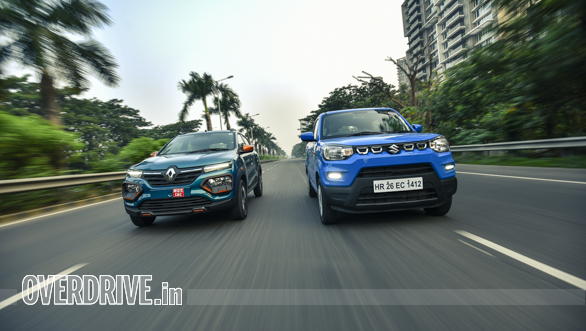
Looking at the specs, we see why - the S-Presso makes its peak torque almost a full 1,000rpm lower than the Kwid and overall feels peppy and eager to catch gaps in traffic. The same situation would have the Kwid deliberate, and the version of this engine in the Triber, with its variable valve timing, would seem like a good fit for this top-spec Climber at least, if Renault can price it sensibly. The AMTs on both perform adequately well for city use, with there being a clear difference in their tuning. The S-Presso shifts quicker but with more perceptible head nod between shifts, while the Kwid prioritises smoothness, taking a second (or in some cases, two!) longer between shifts. In our performance tests, the S-Presso posted a respectable 14s for the 0-100kmph dash, while the Kwid did the same in a disappointing 20s, needing an extra shift to fourth to breach the tonne.
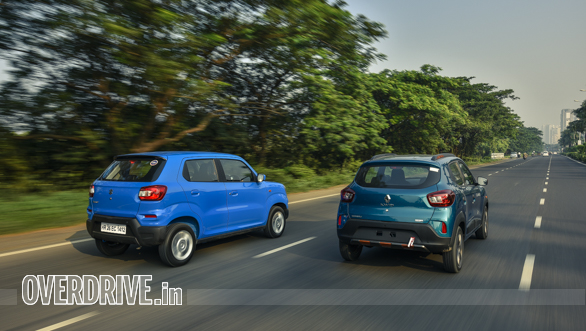
The good news is that the Kwid downshifts more readily, and quickly, than it shifts up, with our kickdown testing showing about a half second gap between the two in our reconstructions of typical traffic manoeuvres. Both are very conservative in their shifts, and you'll often find yourself in fifth at 50kmph if traffic is light. The Kwid, perhaps, shows more of an aversion to shift down but that doesn't help its efficiency figures. It managed 16kmpl in our city testing, to the S-Presso's nearly-20kmpl! Though we don't see people taking these cars out on the highway all that much, the Kwid did improve drastically here, marginally beating the S-Presso with its 22.8kmpl figure, compared to the Maruti's 22.3kmpl.
Ride and handling
If there was a clear difference in priorities of the engineering of these two cars from the way their engines made power, and put it down to the road, their chassis set-ups only cement those differences. The Kwid, again, geared towards comfort, while the S-Presso feels tighter, and more fun, strangely enough. This translates to how these two take on bumpy roads, emergency manoeuvres and the odd corner or roundabout.
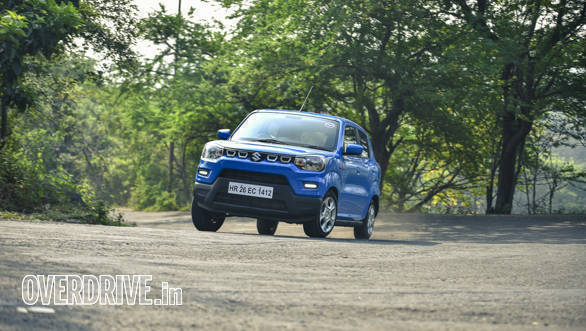
First off, the S-Presso seems to have a slower steering, needing more input than the actual turn, but it pays off in feeling more stable. It's also got a shockingly tight turning radius, with what seems like an extra full lock of steering thrown in. It can get a little bouncy over bad roads, the same roads the Kwid tackles without concern. The trade-off for the Kwid's compliance is bad manners under heavy braking, where the front dives and the rear steps out.
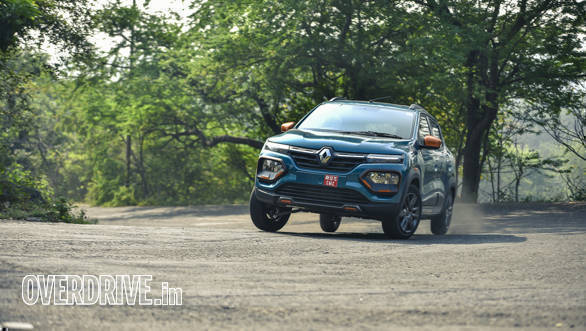
So despite the Kwid stopping in a shorter distance, it needed more time for it, and more of the driver's input to keep it all together. Similarly, the Kwid shows more body movements when going around a corner, with the car feeling like it's shifting under you. There's lean and roll to deal with, something the taller S-Presso manages quite well, by regaining its composure quicker.
Verdict
Ultimately, it's a very close call to say which car is better, with both trading pros and cons through our testing. Given that the top-end AMTs for both are approaching six lakh rupees on road, we'd have expected a bit more from both. More space from the Kwid, and more features from the S-Presso, at the very minimum. But considering the extra performance, efficiency, and importantly, space you're getting with the S-Presso, it makes for the better deal, though the Kwid's impressive warranty package as standard could just be the final deciding factor for many.
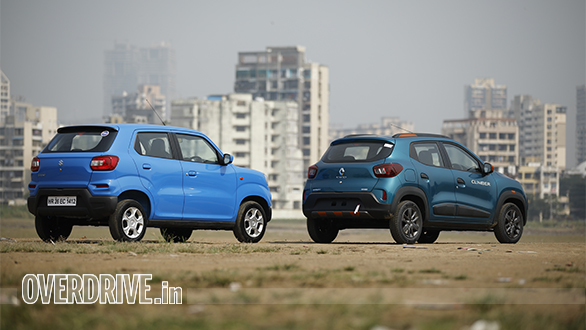
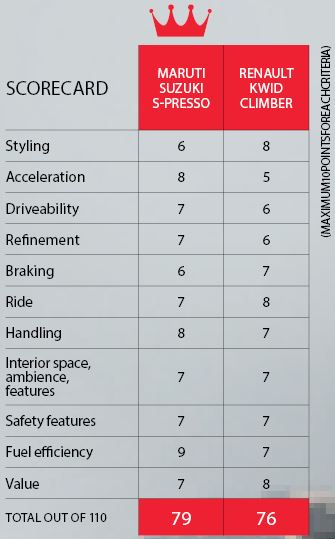
Also see: Maruti Suzuki S-Presso vs Renault Kwid | Comparo
Starts Rs 4.5 Lakhs
999cc
Automatic
54
91
-NA-
Starts Rs 4.25 Lakhs
998cc
Automatic
66.62
89
25.3 Kmpl
Starts Rs 2.94 Lakhs
796cc
Manual
48
69
22.74 Kmpl
